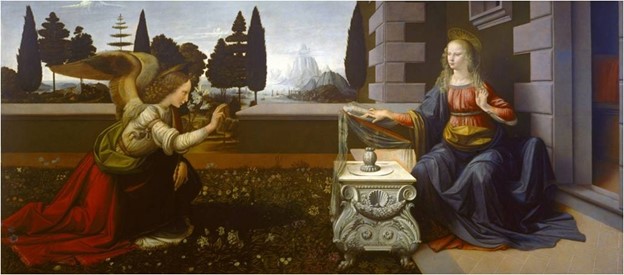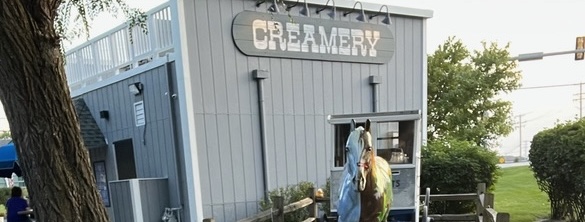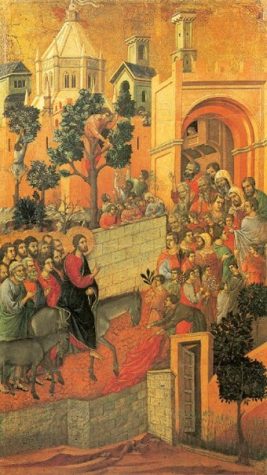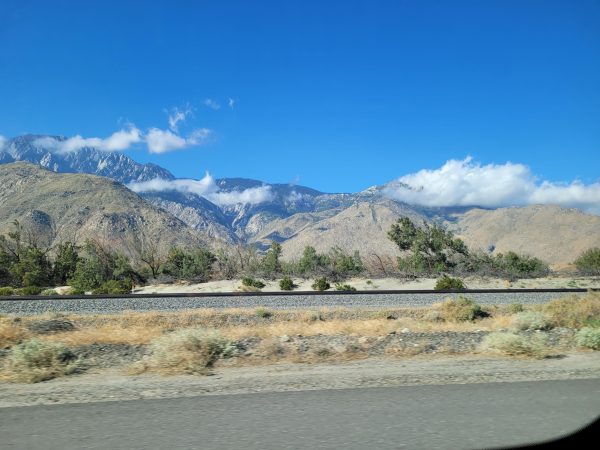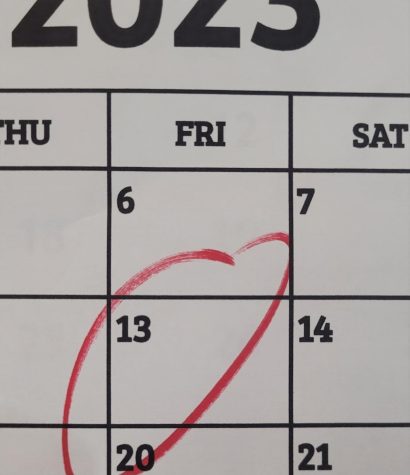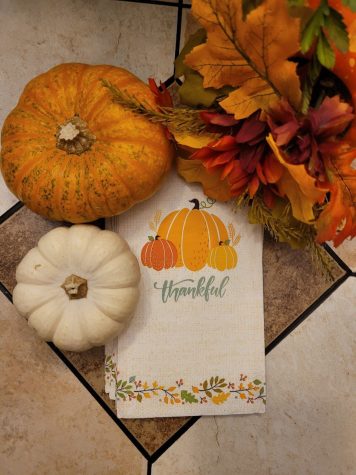The Art Archive
March 4, 2022
There have been numerous pieces of art that have made enormous impacts within both the art community and the world. One of these pieces will be discussed today in this month’s issue of The Art Archive. Leonardo Da Vinci was a brilliant man who used his intelligence to create innovative objects, such as inventions like an early version of a plane. He also created many painting masterworks, such as the Mona Lisa and his many self-portraits. Among these paintings, one has been shrouded in the shadow of the success of his others. This painting is called The Annunciation. It’s true date of creation is unknown, but it is believed to be created within the years of 1472 and 1475. Some even believe that it could have been created as late as 1480. When Vinci created this piece, he was only in his twenties, making this his first true art piece. It was created using tempera and oil paint on a type of panel. During this time, Vinci was still in the studio of Andrea del Verrocchio, to whom he had been an apprentice from his teenage years to his early twenties. With the artwork, an early form of a lectern can be seen. This copied the invention created by Verrocchio, the shape of the lectern itself. Verrocchio was inspired by the tomb of the great Piero the Gouty within the church of San Lorenzo, Florence. During this time period, the world, especially Italy, was transitioning from the saddening Middle Ages to the Renaissance period. The phrase renaissance came from the French language, meaning rebirth. Florence and Venice were among the main posts for this movement. These cities were growing rapidly, and things were changing. This included literature, music, theology, and even artwork. This is what the young Vinci experienced and became his true inspiration. The painting is a composition that depicts an angel on the left, by the name of Gabriel, and an especially important biblical figure on the right, known as Mary, with a lectern placed in between. In the background, greenery, and a portion of a body of water can be seen with ships and a small city placed next to it. A mountain with misty clouds can be seen as well, lingering over the town. This portion of the painting may have been influenced by the rapid increase in Mediterranean trade, which boomed during the Renaissance period especially. It transitions from an architectural setting to an open landscape. This piece started as an altarpiece at the well-known Monastery of San Bartolomeo in Monte Oliveto in Italy. It is said to have remained there at that location until 1867. After its discovery, it was brought to the Uffizi gallery of Florence, Italy for the public to view today. This painting can be considered many styles, but it is agreed that it would be considered early Renaissance or a Sacred style painting. Overall, this painting holds much meaning and emotion that one may not see on the surface. This includes Vinci’s stress on just starting out as an artist and the pressure placed upon him by Verrocchio. I hope when this painting is viewed next, all aspects of both its background and context will be considered.

